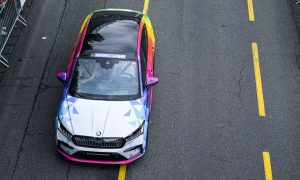
A lot of people think that the airbags in a car are there to take over if occupants don’t fasten their seatbelts. This is an erroneous conclusion. Seatbelts and airbags are designed to work together for maximum safety benefit. Here’s the story:
About seatbelts
In the 1950s, seat belts started to appear as an optional feature in automobiles. In 1959, Volvo was the first manufacturer to actually install seat belts as a standard feature. At first they were controversial. Some people thought seatbelts were uncomfortable and some were obsessively concerned that they would be “trapped” in a car if an accident occurred. Despite these concerns, seatbelts gained acceptance and became an important automotive safety accessory by the late 1960s.
Then came airbags
The concept of the airbag, an inflated pillow to land on during a crash, was at first controversial too. Early systems were slow too and sometimes failed to work at all. Some engineers wondered if these things should be put into cars at all. However, as the technology improved, the bugs were worked out. In 1971, General Motors marketed its first airbags under the moniker “Air Cushion Restraint System.”
How they work
When a car has a front collision, occupants can be thrown forward. When this happens, the goal of an airbag is simply to slow the passenger’s forward motion. This is how they work: when a special motion sensor detects a large, collision-level force, it sends an electrical pulse to the automobile’s airbag inflation system. This pulse ignites a charge that produces a hot blast of nitrogen gas which drives the airbag out from its storage site. And all of this happens in a few milliseconds so the bags are inflated by the time that passengers even move a few inches.
They should be used with seatbelts
Since the early days of airbags and seatbelts, safety engineers have cautioned that they should be used in tandem. Here’s why: Airbags in the front dash only work in front-end collisions. The issue is that car accidents hardly occur “only” in the front of a car. Cars get hit on the front, the rear and the sides. A seatbelt helps keep occupants in their seats regardless of where the collision occurs. Although side-mounted airbags are becoming common now to address side collisions, manufacturers still recommend that seatbelts be worn at all times.
Special note for parents
It didn’t take long to learn that the force of an airbag is substantial and can hurt those who are too close to it. Button Dodge of Kokomo, IN, a Chrysler, Dodge, Ram, Jeep dealer says this means that children should be secured in a way so injury can’t occur. It is important that kids aged 12 and be buckled up in a properly installed, age-appropriate car seat mounted in the rear seat of a car. In the case of very young children, they should ride in a rear-facing carseat that is securely buckled in the back seat of a car.
Image Source: caradvice.com.au
Previous article
2016 Cor.Speed Performance Wheels – Mercedes-Benz W207 Cabriolet


